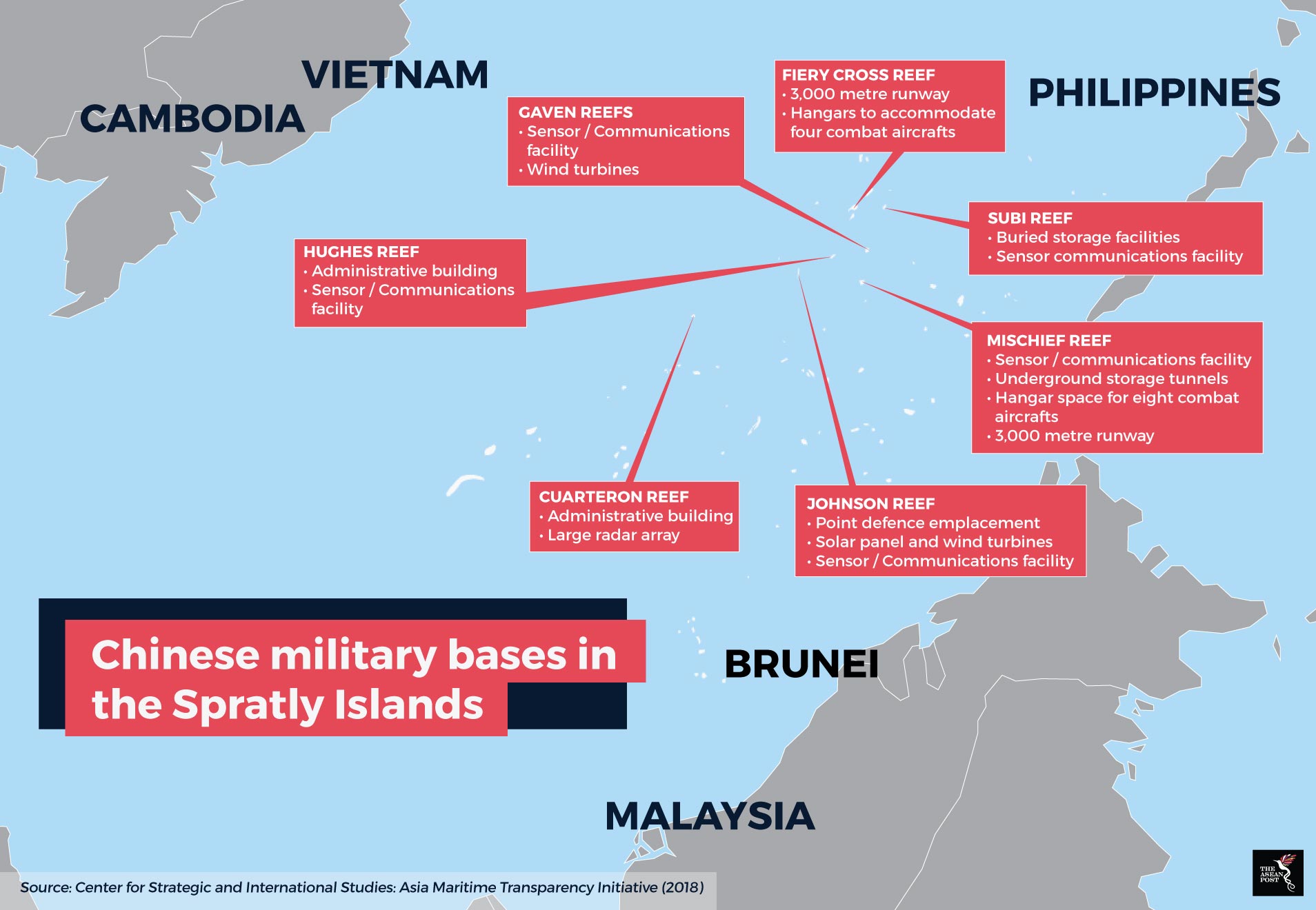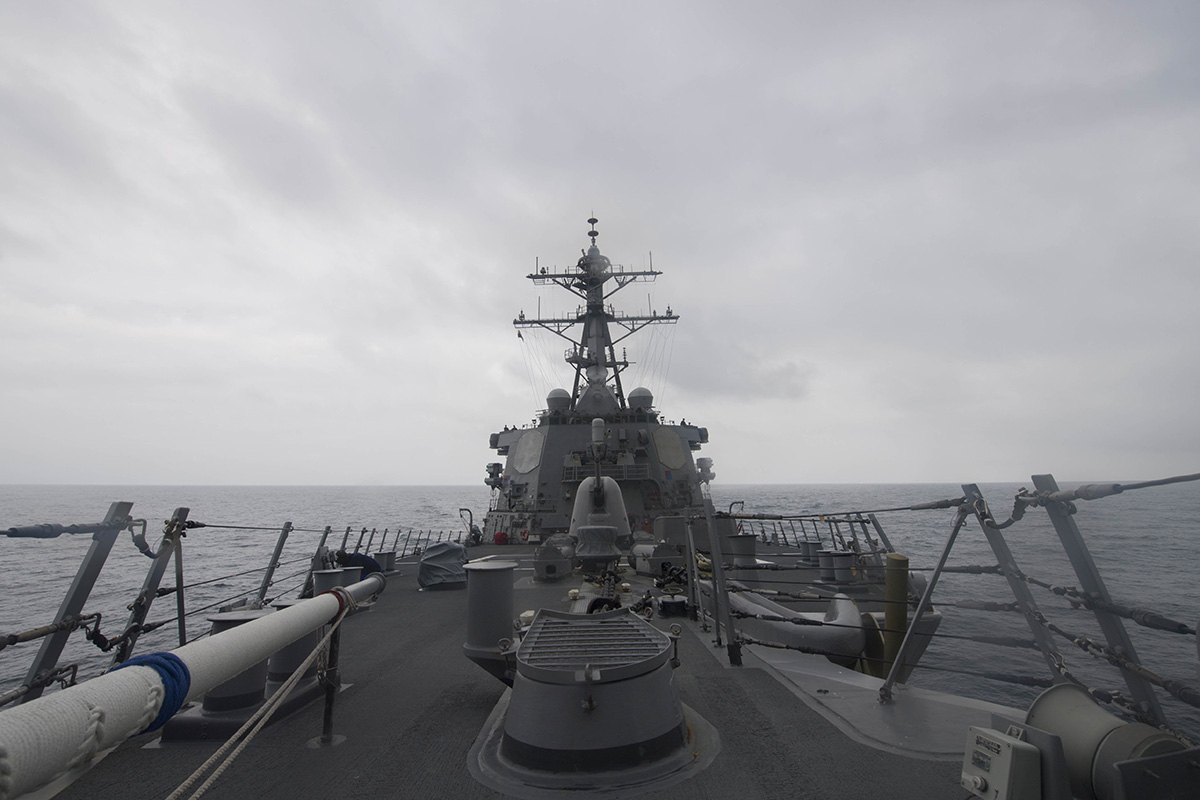The rivalry between China and the United States seems to be heating up – this time outside of the economic sphere. Just a couple of months after President Trump’s speech at the World Economic Forum in Davos where he called out China on their alleged unfair trade practices, US admiral Harry Harris has come out saying that the US must prepare for the possibility of war with China.
The Guardian reported this week that Harris, a navy admiral who is nominated to be the next US ambassador to Australia, told the American Congress that China’s intention to dominate the South China Sea is “crystal clear”. Harris also warned that China could very soon challenge the supremacy of the United States’ military.
The notion that China is out to dominate the South China Sea is not unfounded. Earlier this month, Filipino newspaper, Daily Inquirer published aerial photos of China’s outposts in the Spratly Islands. According to the Daily Inquirer, the photos were taken between June and December, 2017 and were taken from an altitude of 1,500 metres.
The photos revealed that the reefs within the Spratly Islands have been transformed into artificial islands that would act as air and naval bases. The Asia Maritime Transparency Initiative cross checked their own satellite photos with the Daily Inquirer’s and confirmed that China are building bases with runways, aircraft hangars and communications facilities. In addition to this, Business Insider reported last week that China is looking to test drone ships in the South China Sea.

The Spratly Islands is one of the main centres of the ongoing South China Sea dispute. At the moment, aside from China, Brunei, Malaysia, Philippines and Vietnam are among the claimants of the islands within the Spratlys. While Brunei’s, Malaysia’s and the Philippines’ claims revolve around their rights to the Exclusive Economic Zone defined by the United Nations Conventions on the Law of the Sea, the basis of China’s, Philippines’ and Vietnam’s claims are based on historical claims.
China’s militarisation of the area shows its intent on dominating the South China Sea. China’s strategy in the South China Sea has been described as “Cabbage Strategy” – to overwhelm the area with their (China’s) presence and to exert their influence.
The militarisation in the South China Sea has raised fears that it could lead to conflict. While military conflict might not come from South East Asian countries due to the inferiority of their armed forces, the United States has come out strongly against China over their provocative moves in the South China Sea.
The United States has carried out various freedom of navigation missions in the South China Sea to keep China’s military moves in check. These missions often involve American warships equipped with fighter jets patrolling areas of the South China Sea. Lieutenant Commander Tim Hawkins told the Associated Press (AP) this week that the US will continue with their missions despite the presence of Chinese bases established in the area. Tim Hawkins added that they are prepared to provide any sort of assistance in the region be it in the form of “humanitarian assistance” or “send strike fighters ashore.”
Freedom of navigation missions more often than not receive a backlash from Beijing. The Japan Times reported last week that the Chinese military flexed its muscles by deploying fighter jets to the South China Sea. The newspaper also indicated that this could be a response to the freedom of navigation missions that the US has carried out in the region.
While antagonism continues to grow and both powers continue to assert dominance, war in the region is unlikely as both countries have too much to lose. Both countries have repeatedly spoken out against their intention of instigating a war. What we’re seeing now is merely a form of gunboat diplomacy – where both countries are asserting their strength by displaying their military power. Xu Liping, a researcher on Asian-Pacific studies at the Chinese Academy of Social Sciences told South China Morning Post on Monday that, “The aircraft carriers’ visits are only symbolic – to show that America still has a military presence in the region and that it is still a hegemon.”
However, if any conflict does result in the region, ASEAN member states could be the first victims. At the moment it seems ASEAN is powerless as two superpowers come into conflict in the region. This powerlessness is dangerous as it could lead to countries siding with either China or the US to protect their interests. But, strength comes in numbers and ASEAN needs unity if it wants to assert rightful authority within their sovereign waters.
Recommended stories:
